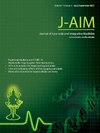Deep learning for Ethiopian indigenous medicinal plant species identification and classification
IF 1.7
Q3 INTEGRATIVE & COMPLEMENTARY MEDICINE
引用次数: 0
Abstract
Background
Medicinal plants are crucial for traditional healers in preparing remedies and also hold significant importance for the modern pharmaceutical industry, facilitating drug discovery processes. Accurate and effective identification and classification of Ethiopian indigenous medicinal plants are vital for their conservation and preservation. However, the existing identification and classification process is time-consuming, and tedious, and demands the expertise of specialists. Botanists traditionally rely on traditional and experience-based methods for identifying various medicinal plant species.
Objective
This research aims to develop an efficient deep learning model through transfer learning for the identification and classification of Ethiopian indigenous medicinal plant species.
Materials and methods
A custom dataset of 1853 leaf images from 35 species was prepared and labeled by botanist experts. Experiments have been done with the use of pretrained deep learning models, specifically VGG16, VGG19, Inception-V3, and Xception.
Results
The results demonstrate that fine-tuning the models significantly improves training and test accuracy, indicating the potential of deep learning in this domain. VGG19 outperforms other models with a test accuracy of 94%, followed by VGG16, Inception-V3, and Xception with test accuracies of 92%, 91%, and 87%, respectively. The study successfully addresses the challenges in the identification and classification of Ethiopian indigenous medicinal plant species.
Conclusion
With an inspiring accuracy performance of 95%, it can be concluded that fine-tuning emerged as a highly effective strategy for boosting the performance of deep learning models.
深度学习用于埃塞俄比亚本土药用植物物种识别和分类。
背景:药用植物对传统医士配制药方至关重要,同时也对现代制药业具有重要意义,有助于药物研发过程。对埃塞俄比亚本土药用植物进行准确有效的鉴定和分类对其保护和保存至关重要。然而,现有的鉴定和分类过程耗时且繁琐,需要专家的专业知识。植物学家传统上依靠传统和基于经验的方法来鉴定各种药用植物物种:本研究旨在通过迁移学习开发一种高效的深度学习模型,用于识别和分类埃塞俄比亚本土药用植物物种:定制数据集包含 35 个物种的 1853 张叶片图像,并由植物学家专家进行标注。实验使用了预先训练好的深度学习模型,特别是 VGG16、VGG19、Inception-V3 和 Xception:结果表明,对模型进行微调可显著提高训练和测试的准确性,这表明深度学习在这一领域的潜力。VGG19 的测试准确率为 94%,优于其他模型,其次是 VGG16、Inception-V3 和 Xception,测试准确率分别为 92%、91% 和 87%。这项研究成功地解决了埃塞俄比亚本土药用植物物种鉴定和分类的难题:通过令人振奋的 95% 的准确率表现,可以得出结论:微调是提高深度学习模型性能的一种非常有效的策略。
本文章由计算机程序翻译,如有差异,请以英文原文为准。
求助全文
约1分钟内获得全文
求助全文
来源期刊

Journal of Ayurveda and Integrative Medicine
INTEGRATIVE & COMPLEMENTARY MEDICINE-
CiteScore
4.70
自引率
12.50%
发文量
136
审稿时长
30 weeks
 求助内容:
求助内容: 应助结果提醒方式:
应助结果提醒方式:


